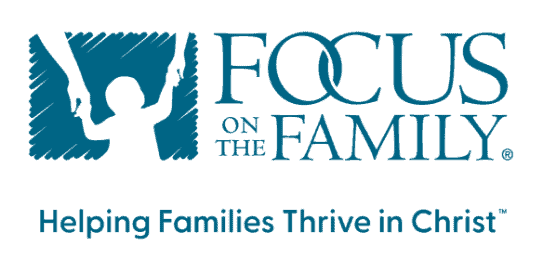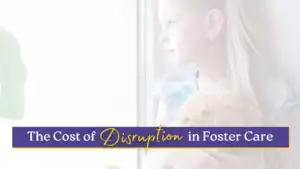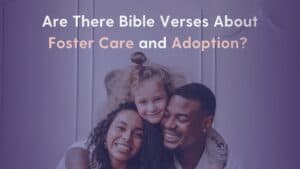For those entering foster care, the legal system can be a confusing and overwhelming process. This is true whether you are a child in care, foster parents, or biological parents. As an attorney and a foster/adoptive mom, even I had to work to understand the process! The purpose of this article is to provide you with an overview of the foster care legal system so you can understand how the process works and the roles that people play. Please note that this article is based on my experience, and some details may vary from state to state.
The Court
When a child enters foster care, a legal case is created within the family court. Family court is the same court system that hears and assists with divorce and guardianship matters. It is separate from the traditional criminal courts that you may be familiar with and is usually in a different building. Consequently, if you are going to an in-person hearing, ensure you know which courthouse you need to go to!
The Parties
The District Attorney’s Office
The District Attorney’s office (“DA”) represents the Department of Family Services (“DFS”). An attorney for the DA will appear at court on behalf of DFS, usually along with the caseworker. The attorney will report to the judge as to the status of the case. He or she will also report whether DFS recommends reunification with the biological parents or termination of parental rights (“TPR”).
The Public Defender’s Office
The Public Defender’s Office (“PD”) represents the biological parents. An attorney for the PD will appear at court on behalf of the biological parents. The biological parents do not have to pay for such representation. Usually, the PD advocates for the biological parents to reunify with their child with appropriate safeguards in place for reunification.
Legal Representation for the Child in Foster Care

In some states, the child in foster care is entitled to some form of legal representation by an attorney. Certain states call this person guardian ad litem (“GAL”). However, not all GALs are attorneys. In other states, the attorney representing the child may be appointed by Legal Aid and named after its program. For example, in Nevada, the child’s attorney is called a “CAP Attorney” after Legal Aid’s Child Advocacy Project. Often the attorneys representing the child do so on a volunteer basis called pro bono representation.
Regardless of the name, the role of the attorney is to advocate for the child. The attorney meets with the child to explain the court system and to understand his or her wishes. In addition, the child’s attorney attends court, reports on the status of the case, and makes a recommendation regarding reunification or TPR based on the wishes and needs of the child.
Foster Parents
Please note that there is no legal representation for foster parents. However, foster parents should attend court hearings as much as they are able to. The judge will usually ask for, and consider, their input. In addition, the child’s attorney should work closely with the foster parents to understand the child’s desires. This is especially important if the child is young and non-verbal.
The Legal Process
Although it is a different system, the family court still has a traditional setup of a judge and attorneys. The judge oversees the case, and the attorneys represent each of the biological parents and the Department of Family Services.
Initial Hearing

When the child first enters foster care, there is usually an initial hearing. This is where it is determined if the child will remain in foster care past an initial emergency placement. If so, the child will formally become a ward of the state. If the child becomes a ward of the state, DFS is required to care for the child. The court will then set a regular status check where all the parties must report on the status of the child. Status checks usually take place every six months.
Reunification or Termination of Parental Rights
In most states, DFS must reunify the child with their biological parents or recommend TPR within a certain timeframe, usually one year. Biological parents may accept or contest TPR if DFS recommends it. If the biological parents accept the TPR, the judge will grant the petition of TPR, and the biological parents will lose their parental rights over the child. If the biological parents contest the TPR, the court will set a trial where DFS must prove that biological parents are not able to provide a safe environment for the child. There is no jury for such trials. Rather, the judge will hear the evidence presented at trial and decide whether to grant TPR. A TPR trial usually lasts 1-3 days.
Closure of the Case—Reunification, Adoption, or Permanent Guardianship
If the judge grants TPR, the child is then “legally free” for adoption. If an adoptive resource is found (usually a relative or a foster parent), DFS will submit a petition for adoption to the same court. Then, the judge will finalize the adoption. Once the child is reunified with his or her parents or is adopted, the court will close the case. If the child re-enters foster care in the future for any reason, the court will start a new case, usually with a different judge.
Occasionally there may be a situation where the biological parents cannot care for their child but there is also a reason not to seek TPR. One example is if the biological parent has severe mental health issues that make him or her incapable of understanding the TPR process. In those situations, the normal adoptive resource (such as a relative or foster parents) may be granted permanent guardianship of the child and the biological parent retains his or her parental rights. After the permanent guardianship is granted, the case is closed as well.
In conclusion, I hope that this article assists you in understanding the legal process of foster care no matter how you may be experiencing the system. On a personal note, we were able to adopt our first foster daughter, who we received as a newborn, after a two-year legal process. Brianna is now 12 years old and thriving. I continue to represent children in foster care as a pro-bono CAP attorney in her honor.
















